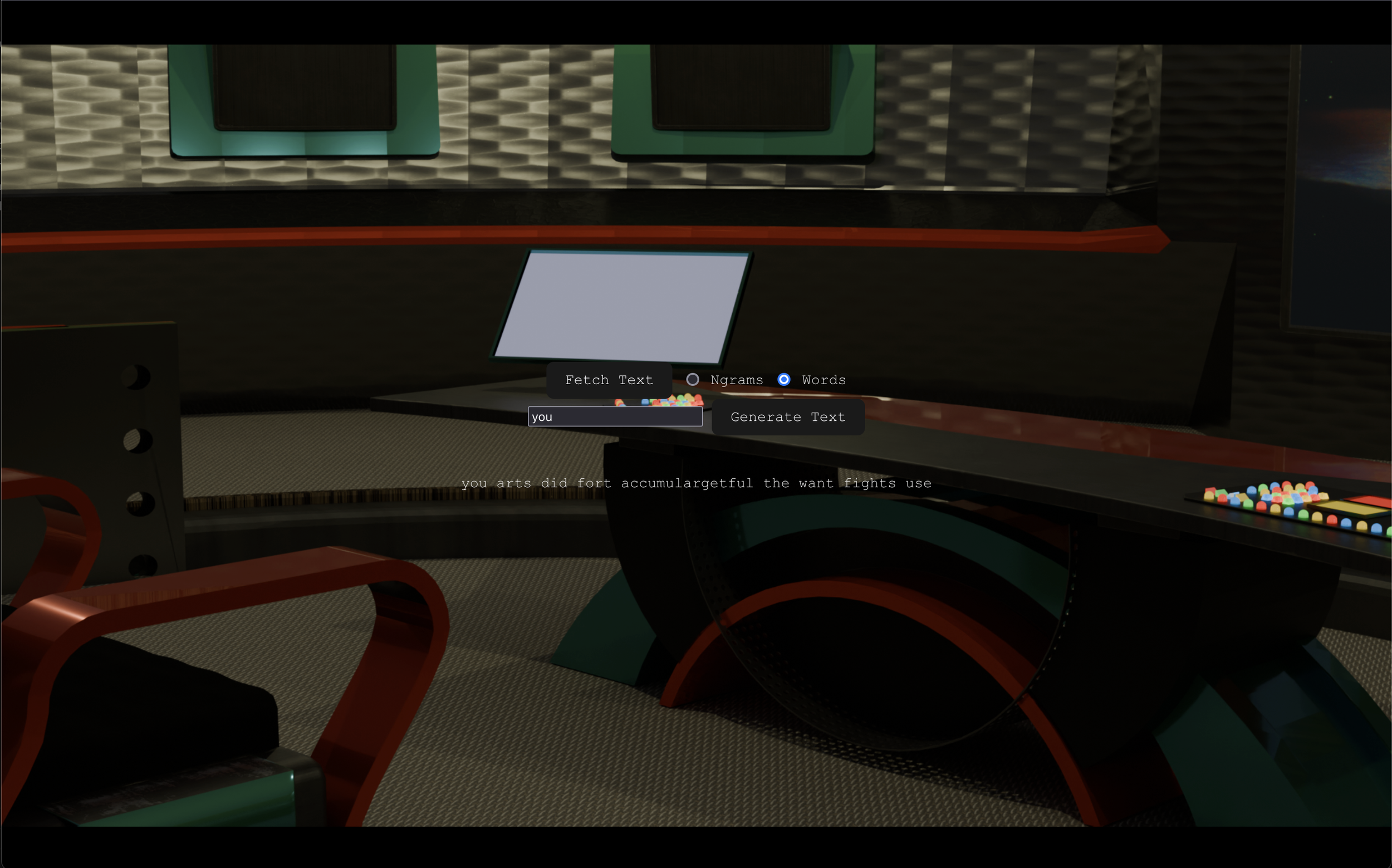
Sci-Fi Poety Generation
Project Brief:
“In the realm of digital media text plays to common roles: that of a source material - for data mining, training ML algorithms, etc, and that of the outcome of the creative process, often a collaborative production of human and machine efforts. In this project we will try to explore both of these aspects: we will source text from available public APIs, and use it to construct our own algorithmic literary creations.”
- Creative Technology 3 (ArtCenter)
Concept Overview
This exploration is incorporated into a larger project: Landing Pad - Nostalgic Future in HTML
Landing Pad explores how a digital “place” can be a landing pad between the media overloads of the internet, and what calming activities spark a calming “future nostalgia.”
How does this tie in with text generation?
In many sci-fi fictions, an emphasis on “historical fiction” is made. This is a way for the writers to expand on the worldviews, histories, and perspectives that exist within this narrative. Like with our world, one can determine a lot of social opinions through art and media.
As well, poetry in particular is often treated as a calm and contemplative medium. Structured line by line, poetry is almost meditative.
Therefore, to explore this fictional future, the visitor can use text generation to create future works line by line. Much of the language will be strange to us as “the people of now” but visitors can assign their own meaning to the poetry. In a way, this adds the visitor’s own creativity into the meditative process.
How it works:
The base HTML code is amended with a JavaScript internal script and external css.
Within the script, two API’s are sourced: PoetryDB and STAPI.
PoetryDB: fetches shakespear sonnets and collects common ngrams (for predictive generation using ngrams and words)
STAPI: fetches Star Trek canon technologies by their name tag
All arrays are used to generate predictive lines, including both sonnet language and sci-fi terminology

